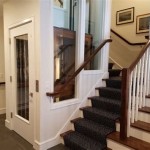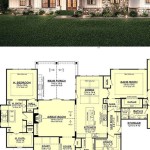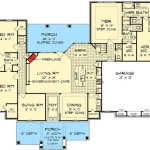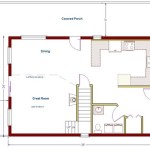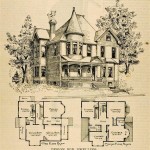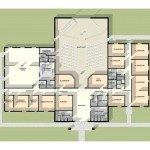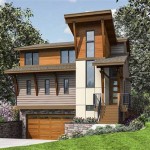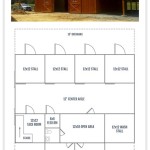Front and Back Porch House Plans: Enhancing Livability and Curb Appeal
House plans featuring both front and back porches represent a design philosophy that values outdoor living and connectivity with the surrounding environment. These plans offer a significant enhancement to livability and curb appeal, providing spaces for relaxation, entertainment, and a seamless transition between indoor and outdoor spaces. The presence of both front and back porches caters to different needs and preferences, contributing to a more versatile and enjoyable living experience. The popularity of these types of house plans stem from a desire to embrace a slower pace of life, fostering a connection with nature and community.
The design of front and back porch house plans requires careful consideration of various factors, including the size and orientation of the house, the surrounding landscape, and the intended use of each porch. The front porch often serves as a welcoming space for guests and a place for residents to observe neighborhood activity, while the back porch typically offers a more private and secluded area for relaxation and outdoor dining. The integration of these porches into the overall architectural design is crucial for creating a cohesive and aesthetically pleasing home.
The Allure of the Front Porch: Curb Appeal and Community Connection
The front porch is often considered the face of a home, contributing significantly to its curb appeal and creating a welcoming impression. A well-designed front porch can enhance the architectural style of the house, adding character and charm. It serves as a transitional space between the public street and the private interior, offering a place for residents to greet visitors, relax with a book, or simply enjoy the outdoors. The presence of a front porch can also foster a sense of community by encouraging interaction with neighbors and passersby.
The size and design of the front porch should be proportionate to the overall size and style of the house. A small bungalow, for instance, might feature a simple, covered porch with a few rocking chairs, while a larger Victorian-style home might boast a more elaborate, wraparound porch with intricate detailing. Common features of front porches include comfortable seating, such as rocking chairs or porch swings, as well as decorative elements like potted plants, outdoor lighting, and architectural accents. The materials used in the construction of the front porch should complement the overall design of the house, creating a cohesive and visually appealing exterior.
Beyond its aesthetic appeal, the front porch also offers practical benefits. It provides a sheltered space from the elements, protecting visitors from rain or sun while they wait at the door. It can also serve as a buffer zone between the interior of the house and the outside world, helping to reduce noise and dust. In some climates, a well-designed front porch can even help to regulate the temperature inside the house by providing shade and ventilation.
The Privacy and Functionality of the Back Porch
Unlike the front porch, which primarily serves as a public space, the back porch typically functions as a private retreat for residents. It provides a secluded area for relaxation, outdoor dining, and entertaining guests. The design of the back porch often emphasizes privacy and a connection with nature, creating a tranquil and inviting space. Back porches are often strategically positioned to take advantage of scenic views or to provide shade from the afternoon sun.
The size and design of the back porch should be tailored to the specific needs and preferences of the homeowners. A small family might be content with a simple patio with a table and chairs, while a larger family might prefer a more elaborate outdoor living area with a built-in grill, a bar, and comfortable seating. Common features of back porches include outdoor furniture, potted plants, lighting, and sometimes even outdoor kitchens or fireplaces. In many cases, back porches are screened in to protect against insects and provide additional privacy.
The back porch can also serve as a functional extension of the interior living space. In warmer climates, it can be used as an outdoor dining room or living room for much of the year. It can also provide a convenient space for storing outdoor equipment, such as gardening tools or sporting goods. By blurring the lines between indoors and outdoors, the back porch can significantly enhance the livability of a home and promote a more active and healthy lifestyle.
Integrating Front and Back Porches into House Plan Design
The successful integration of front and back porches into a house plan requires careful planning and attention to detail. The design should consider the overall architectural style of the house, the orientation of the property, and the intended use of each porch. The placement of doors and windows should be carefully considered to ensure a seamless flow between the interior and exterior spaces. The choice of materials and finishes should also be consistent throughout the house, creating a cohesive and harmonious design.
One important consideration is the relationship between the front and back porches. In some cases, the two porches may be connected by a walkway or patio, creating a continuous outdoor living space. In other cases, they may be designed as separate and distinct areas, each with its own unique character and function. The key is to create a design that meets the specific needs and preferences of the homeowners and complements the overall aesthetic of the house.
Another important consideration is the accessibility of the porches. Front porches should be easily accessible from the street, while back porches should be easily accessible from the interior of the house. Ramps or steps may be necessary to provide access for people with disabilities. The placement of doors and windows should also be carefully considered to ensure that the porches can be easily accessed from different rooms in the house.
The design of the roof over the porches is also an important consideration. The roof should provide adequate protection from the elements, while also allowing for natural light and ventilation. Common types of porch roofs include gable roofs, hip roofs, and shed roofs. The choice of roofing material should complement the overall design of the house and provide long-lasting protection.
Finally, the landscaping around the porches should be carefully planned to enhance their beauty and functionality. Trees, shrubs, and flowers can provide shade, privacy, and visual interest. The placement of walkways and patios should be carefully considered to create a seamless flow between the porches and the surrounding landscape. The overall goal is to create an outdoor living space that is both beautiful and functional, and that complements the overall design of the house.
Several examples demonstrate the appeal of front and back porch house plans. Consider a craftsman-style bungalow with a wide, covered front porch featuring exposed rafters and tapered columns. The back porch, accessed through French doors from the kitchen, could be screened in and overlook a private garden. Another scenario involves a farmhouse-style home with a wraparound front porch adorned with rocking chairs and a swing. The back porch, perhaps featuring an outdoor fireplace, could offer views of rolling hills or a nearby forest.
From a functional standpoint, the benefits are numerous. A family with young children could utilize the front porch for supervised playtime while maintaining visibility of the neighborhood. The back porch could serve as an extension of the kitchen during summer months, facilitating outdoor grilling and dining. The presence of both porches can also increase the resale value of a home, as they are highly desirable features for many homebuyers.
In terms of construction materials, a variety of options are available. Traditional wood framing remains a popular choice, offering a classic and durable solution. Composite decking materials provide a low-maintenance alternative that can withstand the elements. Stone or brick can be used for porch foundations and columns, adding a touch of elegance and permanence. The selection of materials should consider both aesthetic appeal and long-term durability.
The consideration of climate is also paramount. In warmer climates, screened-in porches are essential for protection against insects. Ceiling fans can provide added comfort during hot and humid weather. In colder climates, enclosed porches with heating systems can extend the usability of the space during the colder months. The design should adapt to the local climate to maximize the enjoyment of the outdoor living spaces.

Beautiful Small Country House Plans With Porches Houseplans Blog Com

Minimalist Floor Plans With Porches Houseplans Blog Com

Plan 86339hh Storybook Bungalow With Large Front And Back Porches Cottage House Plans Farmhouse

Small Ranch House Plan Two Bedroom Front Porch 109 1010
:max_bytes(150000):strip_icc()/SL-2063_grace-park-cottage-bdb8065f18cd4396a175c11232b1c2c4.jpg?strip=all)
30 Pretty House Plans With Porches

Southern Living Dreamy House Plans With Front Porches Blog Dreamhomesource Com

Cottage House Plan With 3 Bedrooms And 2 5 Baths 6619

House Plans With Porches Front Back Screened More

Cranberry Gardens House Plan Archival Designs

Dream House Plans With Front Porch

